'I trained with Emma Raducanu's former coach - here are 12 things he taught me'
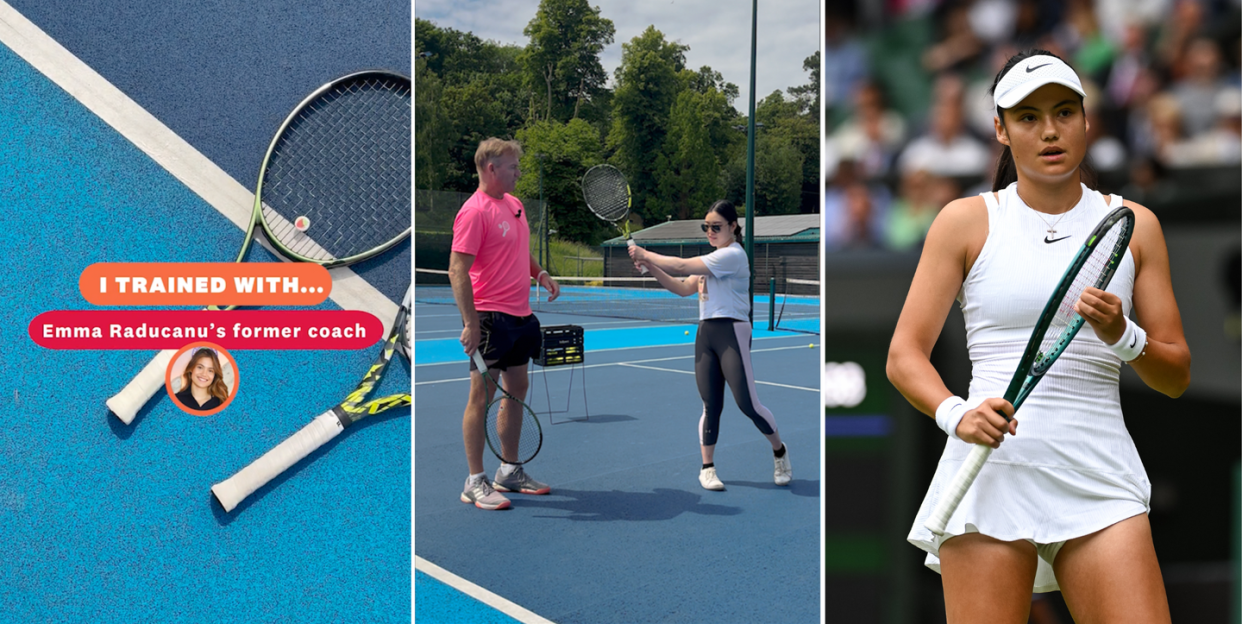
2024's summer of sport means the Olympics, the Euros, and with the start of July, Wimbledon. What better way to get into the swing of things than training with Mark Petchey, Emma Raducanu's former coach, British No.1 in the late '80s, and Racket Sports Ambassador at Neilson Beach Clubs?
As someone who hasn't picked up a racket since they were about 13 (and whose skills were pretty questionable to begin with), Mark's meticulously thorough guidance on (not-so-) basic strokes, timing and footwork swatted away any of my hesitation, serving up an encouraging and immensely enjoyable session that almost had me feeling like I belonged on the court.
In amongst all this back and forth were Mark's insider tips on training Emma, the first British woman to win a Grand Slam title since Virginia Wade in 1977: which strokes she focused on, the drills she used, and even details about the racket she plays with. Score. Here's everything Mark taught me.
Join Mark on the court at a Neilson holiday this summer. He'll be training holidaymakers at the Alana Beach Club in Croatia from 13-20 July and Messini Beach Club from 9-17 September.
1. The most precious thing on a tennis court is time
'How do you buy yourself time? Move your racket [further] back, if you know if it's coming to your forehand or backhand. It's the most important thing when you see the ball coming off your opponent's racket. Then you have time to move your feet. A lot of people I see running into position with a racket in front of them and then the ball bounces and then everything happens too fast.'
2. On contact, when you hit the ball, don't look down the court - keep your eye on the racket
'Keep your head still. So many people are so quick, when they're not confident, [to look] where the ball's gone, rather than making sure they've contacted it very well.'
3. In terms of footwork, move with the fewest number of steps
'The key to moving great on a tennis court is to be able to predict where the ball's going to be and move with the fewest number of steps and as efficiently as possible. We get told a lot to move our feet little steps and get in position - this actually slows you up. You should split step [a little 'hop' before you hit the ball] wider than your shoulders so that your first step out of [that position] can [create a wide stance].
'I see a lot of people [bouncing on the balls of their feet, placed too close together] on a tennis court, and [they continue to move with tiny paces]. But the key is to be able to predict where the ball is going to be, and to move with the fewest number of steps that you can.'

4. Beginners tend to find the scoring system the hardest to learn
'The more you play, the quicker you're going to learn. But the hardest thing for most people is probably the scoring system. Once you've done it a few times, you'll get used to it. You get two serves diagonally crosscourt into the service boxes, the front part of the court. If you miss both, that's a double fault and then you lose that point.'
5. Just like Emma, you should warm up on the court with an actual ball
'Everybody these days pulls on those elastics [resistance bands] and takes time warming up. I'm not a big fan of that. I'm old school - I like to get on the court and get involved.
We do a lot inside the service boxes - little drop-shot drills [hitting the ball relatively softly so it lands just over and close to the net] that get your hands and wrists warm. Novak Djokovic introduced a great drill where you have to bounce it on one side of the court and over, which is incredibly tricky to do.
'But do anything that gets your mind engaged, gets your body warm, and that's not too stressful, before you start hitting balls. Most physical therapists probably wouldn't love [me for saying that]!'
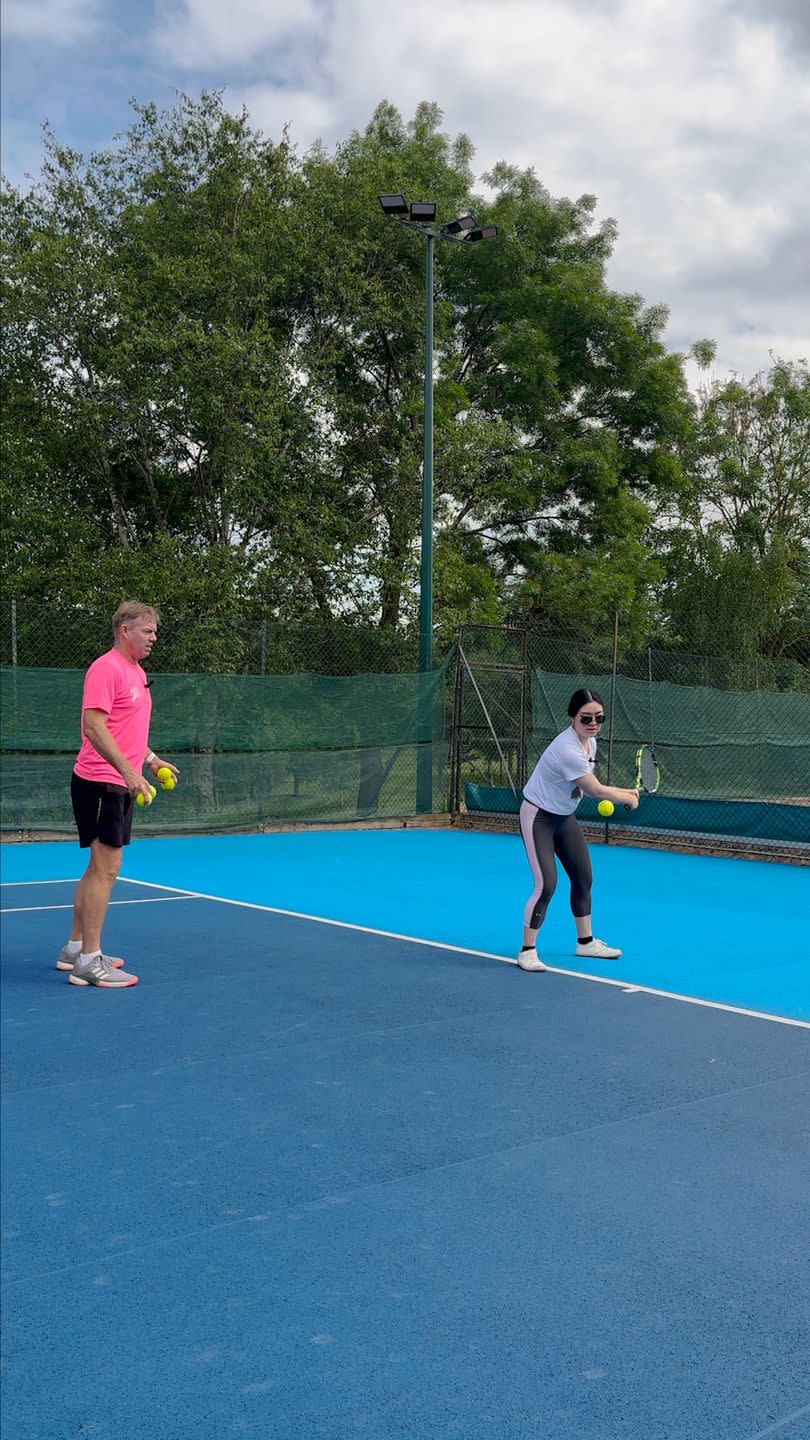
6. Emma didn't stick to a specific schedule
'It was Covid and she was studying for her GCSEs when we trained together, so it was a weird time. I wouldn't say there was a game plan Monday to Sunday. I'm not very trained by numbers: I like to feel it on the day. There'd be times when she'd phone up and say, "I need to get my head in the books".
'I'd always try and play for two hours with her. But sometimes we'd look at the clock and it'd be three and a half hours, [especially] if there were things to work on.'
7. Emma focused on specific strokes
'Some days, you'll go in with a plan to work on forehand, but the backhand is terrible and therefore you switch to making sure that's okay. She had a big flaw on a serve that we spent many hours trying to fix over the course of those 10 months. [Sometimes] you'd want to work on the drop shot or a forehand slice.'
8. Emma experimented with different racket brands
'We also changed her racket. She was playing with one brand but we switched to another that was slightly longer, plus there was a little bit of a change up with the strings.'
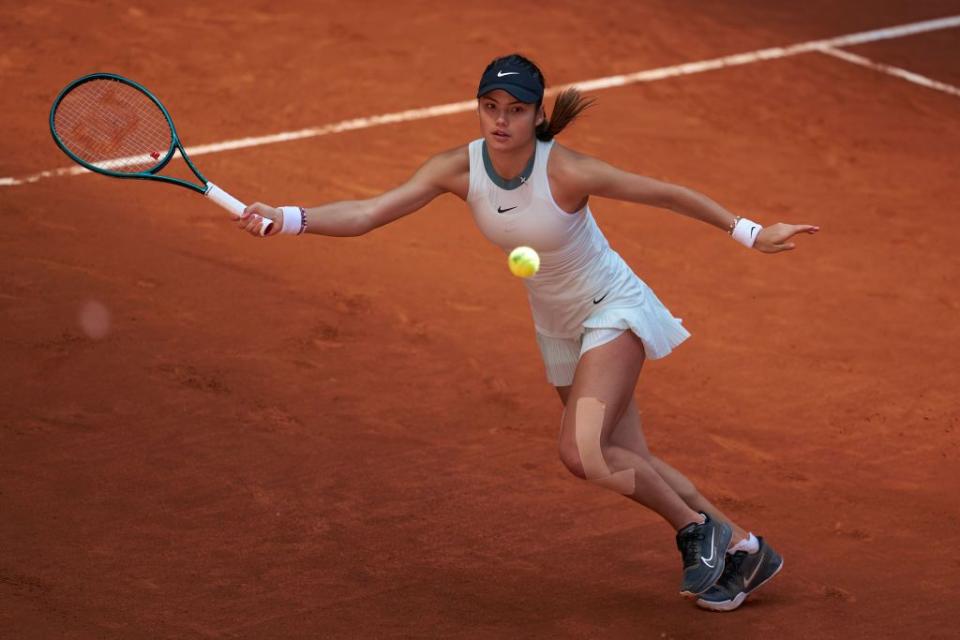
9. Go for an L2 racket grip
'One of the most important things these days is size of grip [which can be found at the bottom of your racket generally. You want to have some distance between your fingers and hand once you've gripped the handle]. In tennis, you get an L1 (4 1/8"), which is the smallest, then L2 (4 1/4"), L3 (4 3/8") and L4 (4 1/2"). I think most people should go for an L2 or L1.'
10. Get a racket that weighs under 300g
'You should probably get a racquet that weighs about 280g, and then once you put the strings in, that'll add another 15g - keep your racket to around 300g or under.'
11. The string pattern of your racket has a big impact
'If you look at the racket strings, some are very tight with the squares, while some are a little bit bigger,' Mark told me. 'For example, one racket could have 18 main [vertical] strings, and 20 on the [horizontal] crosses.
Emma plays with one which has 16 in the mains and 20 on the cross.'If the racket strings are wider, the strings move more. And therefore you get more revolutions and hopefully you can control the ball better. The tighter strings means you hit the ball flatter. For most people, go somewhere in the middle and get a string pattern of 16 x 19.'
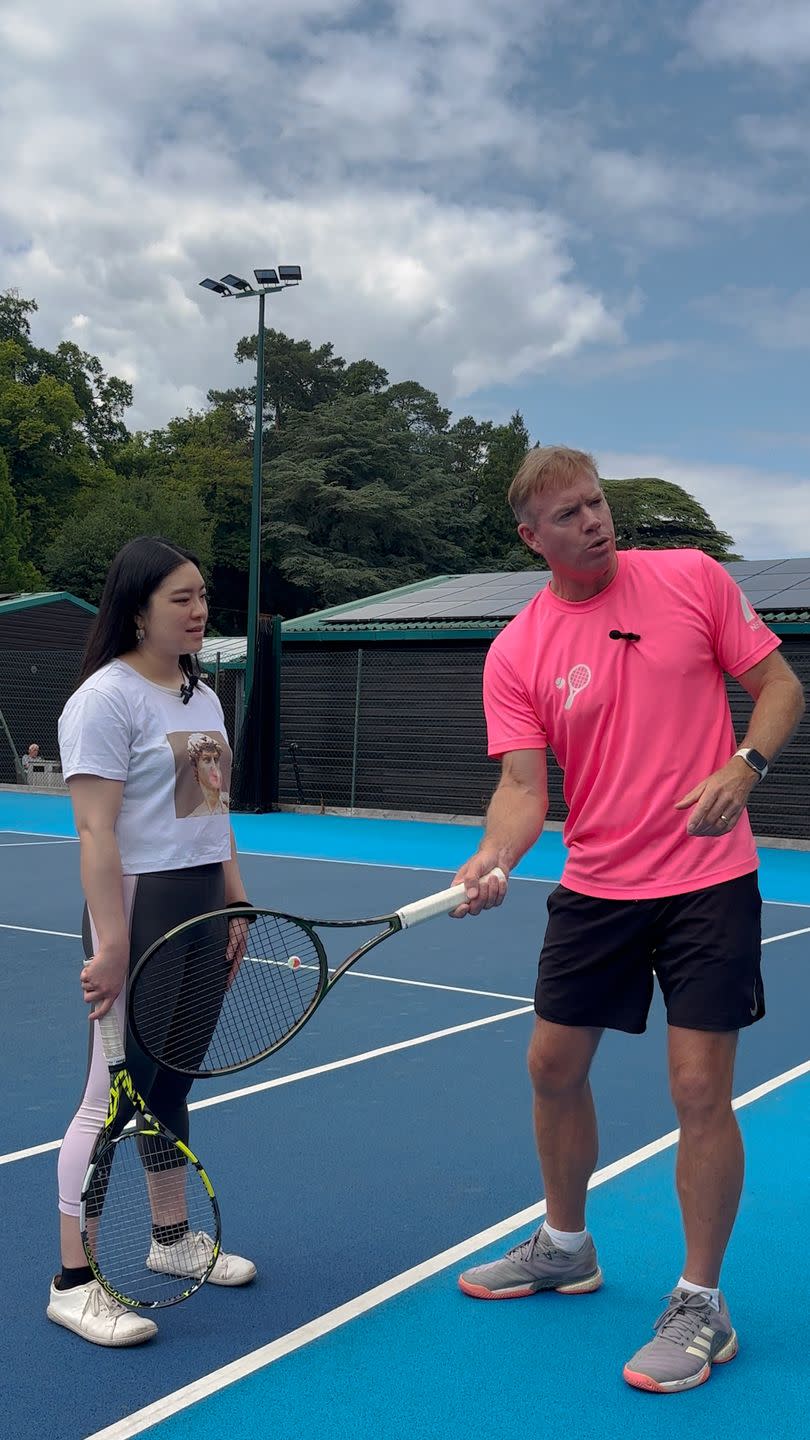
12. The drills for Emma and the pros are the same as those for everyone else
'There's this big myth that when you coach at pro level, you've got drills that no one's ever seen,' says Mark. 'But the reality is that it's a lot of [basic] drills, but you just have to do them exceptionally well.'
a) Drill through the middle of the court
'The first drill I did with Emma was [having her hit balls] through the middle of the court, literally straight down, [trying not] to miss any. She started at about two minutes without stopping. Eventually, by the time I finished it with her in ten months, she was able to do it for five minutes without stopping, with maybe just one or two mistakes.'
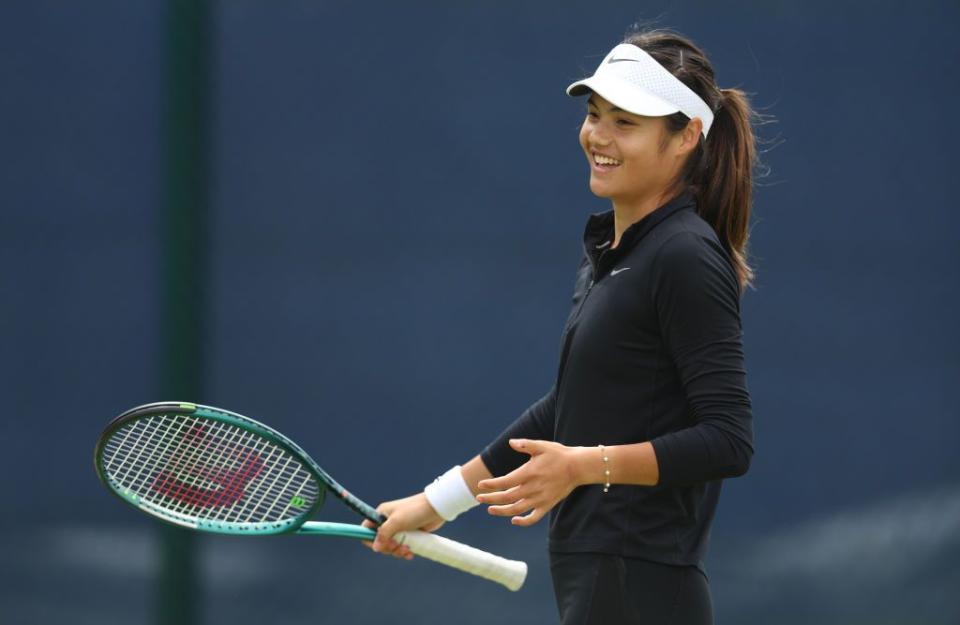
b) A drill to improve Emma's forehand
'She had a very flat elbow with her forehand - this one's a bit more technical. She'd move her [arm back so her elbow was pointing down at about a 45 degree angle]. So I spent a lot of time with a basket just dropping balls for her, so she could get used to picking her elbow up [diagonally away from her shoulder].
'We'd spend many hours trying to get shape [and improving the curve of the ball] on her forehand because then she had safety built in. It also allows for a lot more power because it's a looser shot, [as opposed to] when you take the racket away [as she was doing] and it becomes very stiff.'
c) Rhythm drills
'A lot of drills sometimes become mind-numbing, so I love rhythm drills where you have to think. For example, you'd go cross court, then hit your forehand down the middle, then hit an off-forehand, then a backhand through the middle, then another off-forehand, and then a backhand down the line [parallel or near to one of the sidelines, so it never crosses the centreline]. And then you'd play the point out. The purpose of the drill is that you have to hit all the specific spots of the court that you're supposed to in the tennis before then playing the point out.'
How to do a forehand: Lay the racket down on the ground [with the head away from you]. Put your hand on the [butt, or the base, of the] racket handle, and pick it straight up [aligning your knuckles with the side of the racquet].
After that, take the racquet back, so the butt is pointing straight down the court towards the net. Stand side on, feet parallel, [in line with the racquet].
Swing through the ball with that contact point out in front of your body and finish up with the racquet over you shoulder and the bottom once again pointing down the court.
How to do a backhand: These instructions are for the one-handed backhand. Stick your racket in our non-dominant armpit and [grab the grip with your dominant hand so your knuckles align with the side pointing down]. It's also called the motorbike grip.
Once again, get side on to the court with your racket pointing down the court. Just like the forehand, swing forward, with your contact point out in front, and follow through, up and over. You've seen Federer do this on Centre Court all the time.
Up your game with more racket-sport hits
Cut through the noise and get practical, expert advice, home workouts, easy nutrition and more direct to your inbox. Sign up to the WOMEN'S HEALTH NEWSLETTER
You Might Also Like



